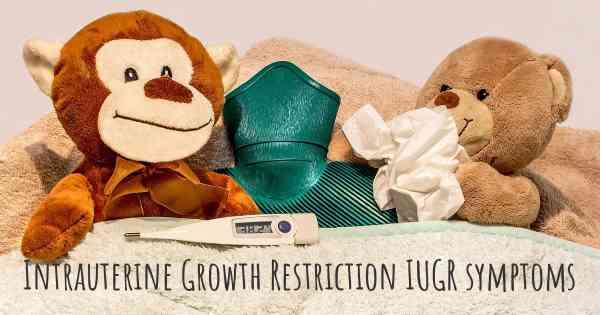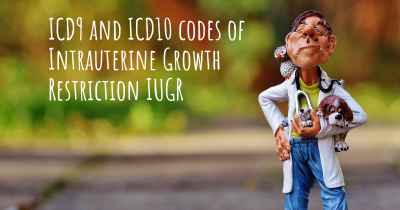Which are the symptoms of Intrauterine Growth Restriction IUGR?
See the worst symptoms of affected by Intrauterine Growth Restriction IUGR here

Symptoms of Intrauterine Growth Restriction (IUGR)
Intrauterine Growth Restriction (IUGR) is a condition in which a baby fails to grow at the expected rate during pregnancy. It occurs when the baby does not receive enough nutrients and oxygen from the placenta, leading to restricted growth. IUGR can be caused by various factors, including maternal health issues, placental problems, or fetal abnormalities. Identifying the symptoms of IUGR is crucial for early detection and appropriate management of the condition.
1. Decreased fetal movement: One of the early signs of IUGR is a decrease in the baby's movements. The mother may notice a reduction in the frequency or intensity of fetal kicks and movements.
2. Abdominal measurement: A healthcare provider may measure the size of the mother's abdomen during prenatal check-ups. If the measurement is consistently smaller than expected for the gestational age, it could indicate IUGR.
3. Slow or stagnant growth: IUGR is characterized by poor fetal growth. Ultrasound scans are commonly used to monitor the baby's growth throughout pregnancy. If the baby's growth rate is significantly slower than expected, it may be a sign of IUGR.
4. Low birth weight: Babies with IUGR often have a lower birth weight than average. A baby born weighing less than 5.5 pounds (2.5 kilograms) may be considered to have IUGR.
5. Disproportionate body parts: In some cases of IUGR, the baby's head or abdomen may appear larger in proportion to the rest of the body. This can be observed during ultrasound examinations.
6. Reduced amniotic fluid: IUGR can lead to a decrease in the amount of amniotic fluid surrounding the baby. This can be detected through ultrasound examinations.
7. Placental abnormalities: IUGR is often associated with placental problems, such as placental insufficiency or placental abruption. These conditions can be detected through ultrasound or other diagnostic tests.
8. Maternal risk factors: Certain maternal health conditions, such as high blood pressure, preeclampsia, diabetes, or chronic kidney disease, increase the risk of developing IUGR. Monitoring these risk factors during pregnancy is important for early detection.
9. Decreased fundal height: Fundal height refers to the distance between the top of the uterus and the pubic bone. In cases of IUGR, the fundal height may be smaller than expected for the gestational age.
10. Delayed milestones: In severe cases of IUGR, the baby may experience developmental delays after birth. These delays can include slower physical growth, delayed motor skills, or cognitive impairments.
It is important to note that the presence of these symptoms does not necessarily confirm the diagnosis of IUGR. A healthcare provider will conduct a thorough evaluation, including ultrasound scans, Doppler studies, and other diagnostic tests, to confirm the condition. Early detection and appropriate management of IUGR are crucial for ensuring the best possible outcome for both the mother and the baby.








